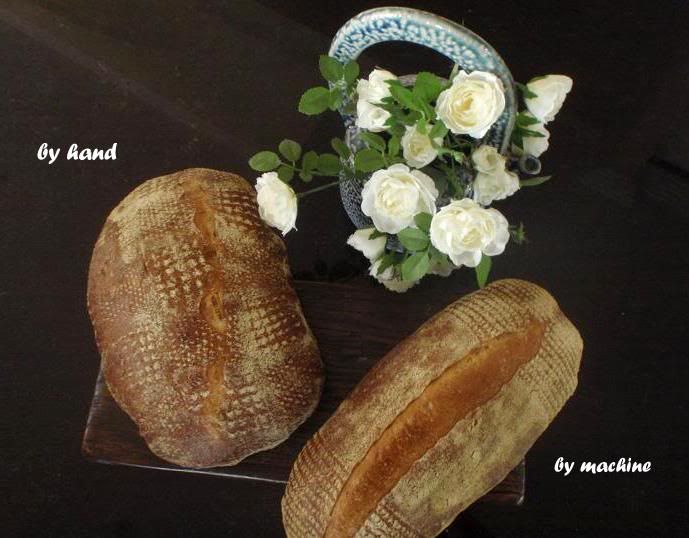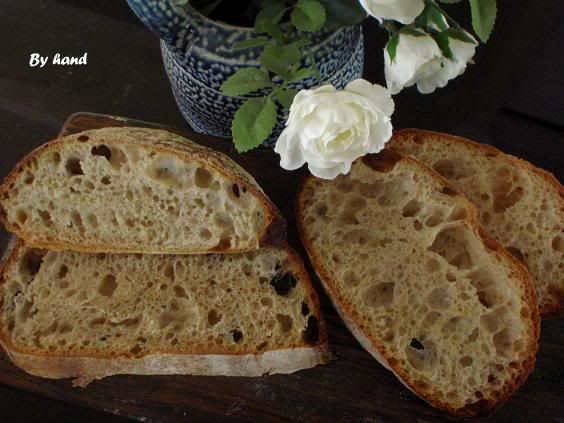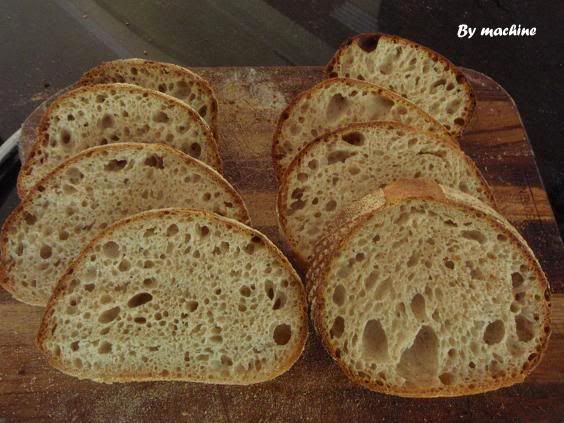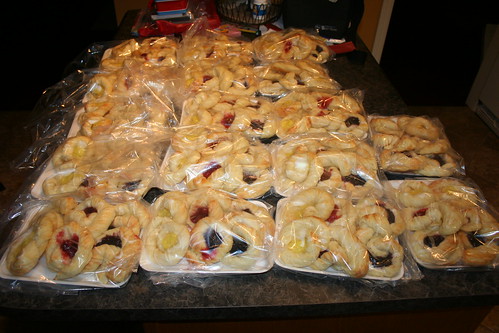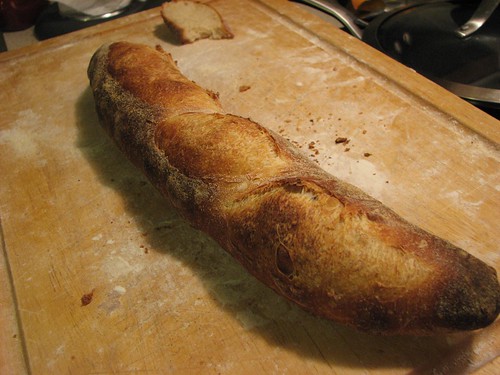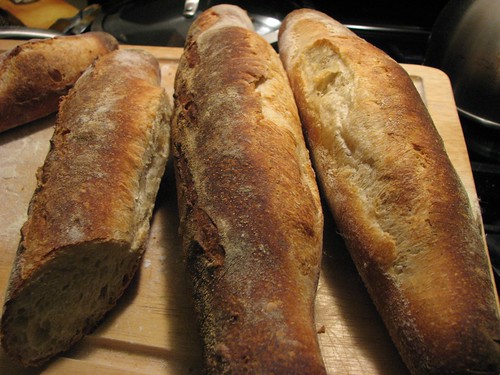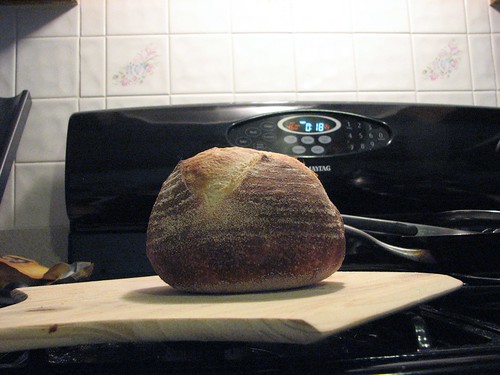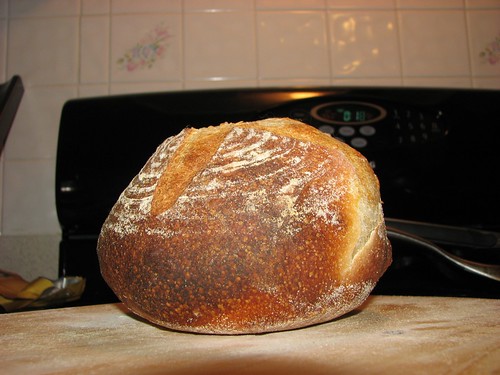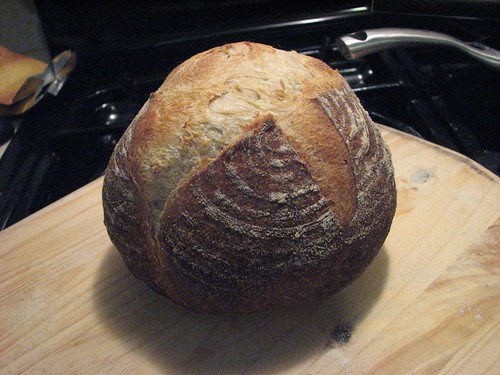
Hi all, I have been lurking, occasionally posting here for a while now, finally decide to bite the bullet and start my blog to make here "home". I was born in China, moved to North America after high school, now working and living in Dallas TX with my husband and our dog. About a year ago I picked up baking, at first just to recreate some of my favorite Asian style desserts, pretty quickly though I started making bread, and it's been an "obsession" ever since. My favorite baking book is Hameman's "Bread", love BBA too which is why I am a part of the BBA challenge. Until now I have been mostly following recipes, with some minor changes here and there. Recently I made several five grain breads and loved their taste. Also made Anis baguette and loved how easy that schedule fit into my busy work week - 2 to 3 hours a night is the most I have on a weekday night. I then decide to combine the two to make a "5 grain weekday bread" so we can have fresh bread for after work! Here's the formula, which is basically Anis's yeast percentage and timing, with everything else modified:
5 Grain Weekday Bread
Bread flour: 80%
Whole wheat/whole rye/or a combo of the two: 20%
5 grain mix (I used flaxseeds, sunflower seeds, buckwheat, wheat bran, and steel cut oats this time): 20%
salt: 2.2% (higher than Anis formula due to the grain mix)
water: 80% (since bread flour, WW flour, and grain mix all absorb more water than the AP flour in Anis formula, I increased the water. It didn't feel wet at all, I think I could've added even more water.)
First night
1.Mix everything, autolyse for 30 minutes, mix in my KA at first speed for 1 minute then 2nd speed for 2 minute for some basic gluten developement, put in bowl to fermentate.
2.fermentate for 1.5 hours total, at every 30 minutes stretch and fold. I didn't have to do the S&F in the bowl, I could S&F on the counter totally fine.
3.Put back into the bowl and put in the fridge (slightly lower than 40F) for 22 hours.
4.Soak the grain in equal amount of water from the total formula.
Second night
5.Take the dough out, it has rised a little, and full of bubbles. Cut into 2 parts, each about 1lb. Preshape and relax for 45 minutes.
6.Shape into boules and put in proofing baskets for 40 minutes.
7.Score and put into 550F oven with usual steaming method (I use a cast iron pan with lava rocks, and pour water into it). Lower the oven temperature to 460, bake for 30 minutes. At 15 minutes, take out the cast iron pan.
As you can see, there's massive oven spring. I got a bit "creative" with the scoring, which is why one of the little boule is wearing a "hat".

Pretty happy with the taste too, crunch crust with chewy crumb, I can taste the grains:

I may add some of my 100% starter to the mix next time just to get that sourdough flavor I love, but I will still keep the yeast since it's a "weekday bread" and I need it to fermentate and proof reliably on schedule.
I am pretty happy with my first attempt to create my own formula, this really opens up a lot of possibilities - I can throw in a lot of flavor combos that I like. One thing I am curious about is whether the relatively closed crumb is due to the grains, or my handling, or maybe it needs more water?



